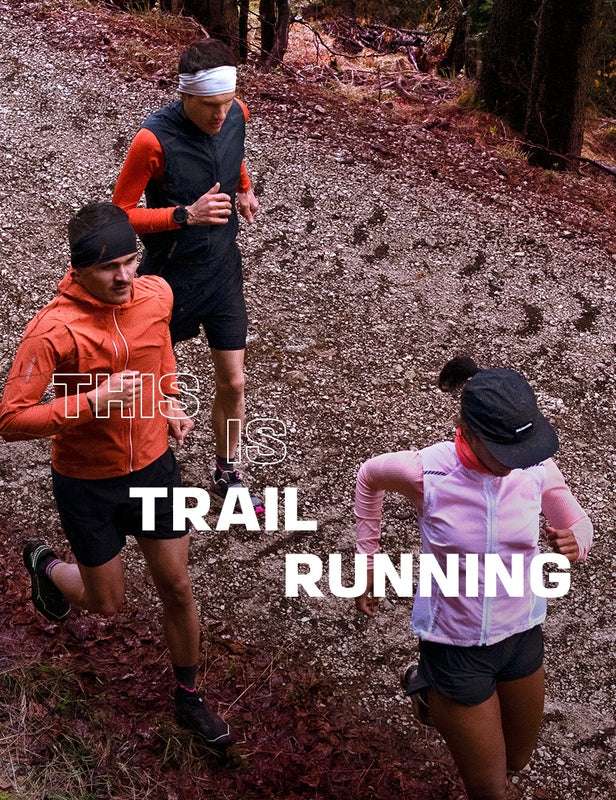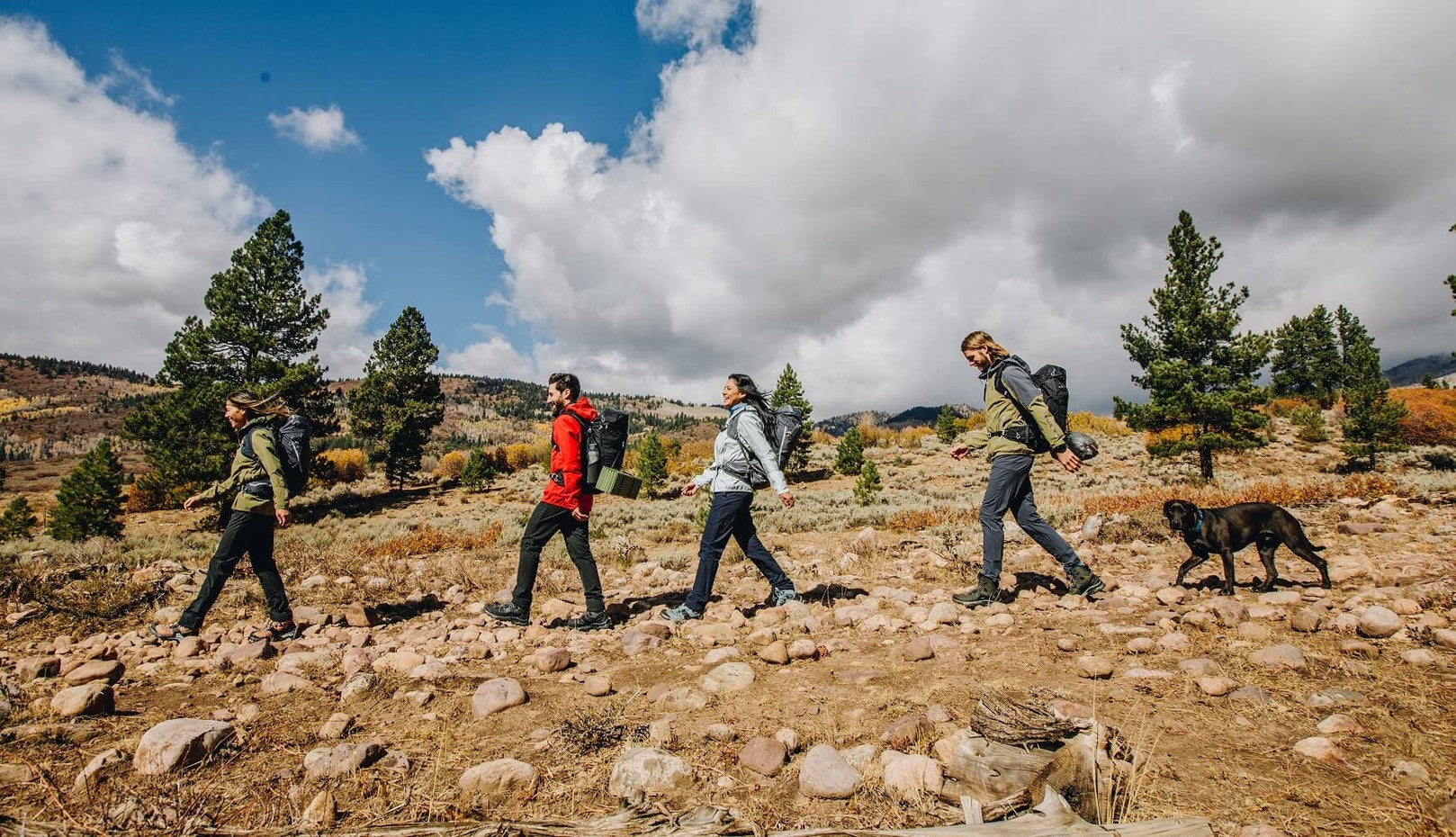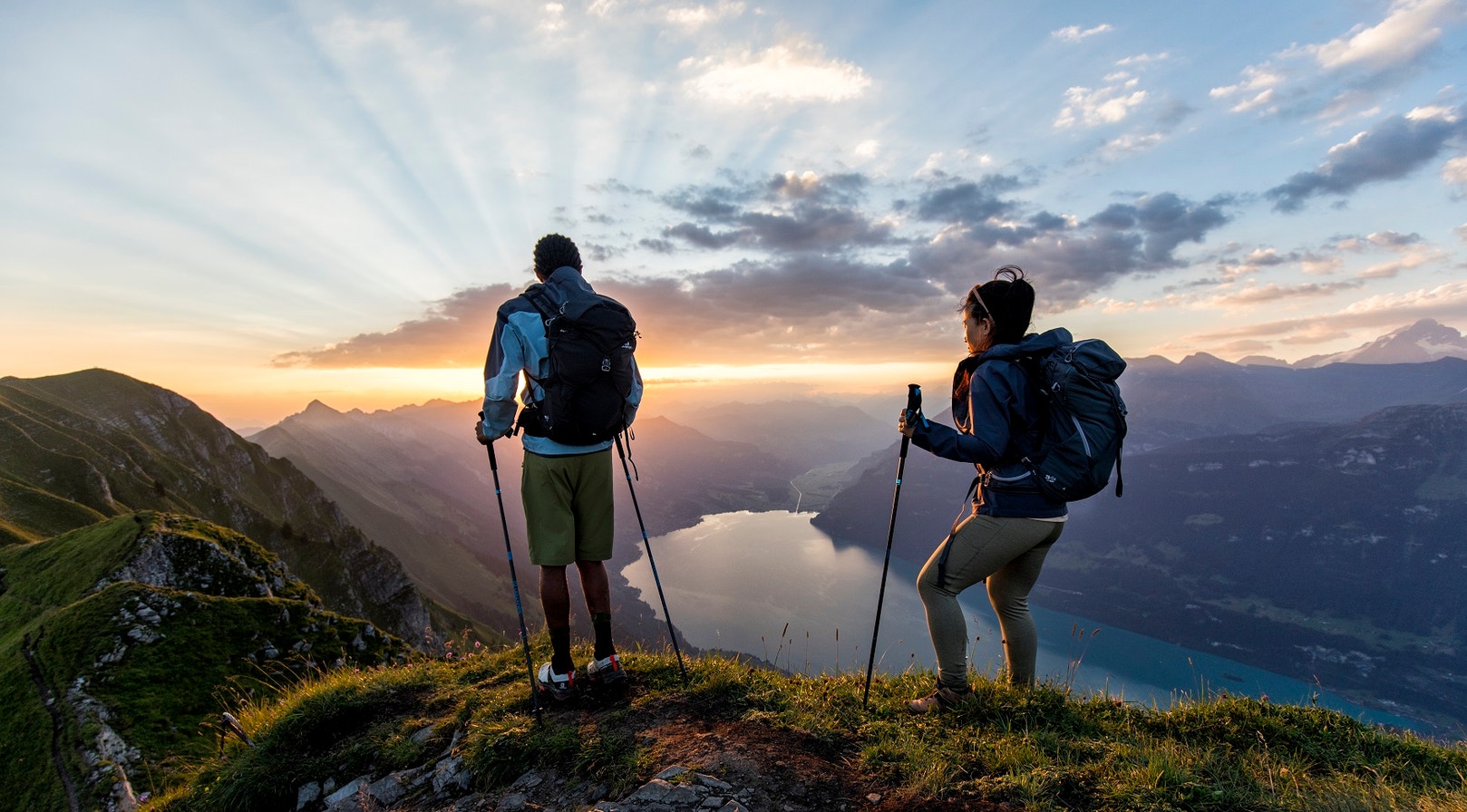Dressing properly for an outdoor sport like hiking is based on the 3-layer system, also called layering:
- Breathable base layer: a next-to-skin layer that moves moisture away from the skin.
- Insulating midlayer: a garment that’s worn over the first layer to protect against cold when necessary.
- Protective outer layer: a jacket that protects against exterior elements like rain, snow, and wind.
When you’re hiking it’s essential to take a jacket with you regardless of the weather even though it’s easy to underestimate the importance of this when the weather is good. Your jacket might stay at the bottom of your pack throughout the entire hike, but it will come in handy when the wind picks up unexpectedly or if you’re surprised by a downpour. In the mountains when conditions get really wet, a waterproof jacket can be an invaluable piece of gear.
How much protection do you need from your jacket?

Hiking in hot, dry weather: always take a jacket as a safety precaution even if it mostly stays at the bottom of your pack. When you stop for a break, or if the weather deteriorates unexpectedly (as often happens in the mountains) a jacket can provide you with the additional comfort and protection you’ll need to get out of a bad situation. A lightweight, water-repellent, compressible jacket is ideal for this. Jackets like this are usually affordable and therefore a good first purchase because they’re so useful.
Hiking when there is the possibility of rain or snow showers and/or wind: a water-repellent, softshell-type jacket can provide sufficient protection for a hike of an hour or two in light rain. If you’re hiking for longer, or if conditions deteriorate, choose a waterproof and windproof jacket with a Gore-Tex type membrane. These jackets provide superior protection while remaining lightweight and compact.


Hiking in heavy rain or snow: if you’re hiking in extreme conditions, heavy-duty protection against water and wind is crucial if you want to enjoy yourself. So choose a waterproof jacket with a Gore-Tex type membrane coupled with a water-repellent treatment (also called hardshell) along with waterproof seams and zippers. This type of jacket provides the highest level of protection against rain, wind and snow.
Our women’s jackets | Our men’s jackets
Prioritize breathability
Because hiking is an active sport, you need to be able to wick sweat away from your base layer. Regardless of how much protection it provides, your hiking jacket must be breathable to allow perspiration to escape from inside the garment.
Water-repellent, softshell-type jackets without a membrane are sufficiently breathable for hiking and other active sports such as trail running or mountaineering. (To learn more about choosing a running jacket, check out our article: How to choose your running jacket.)
Jackets with waterproof membranes don’t all have the same amount of breathability. To find the best breathability (starting at 10,000 MVTR) in a waterproof jacket, you’ll need to go upmarket.
The breathability of your jacket can also be increased with mechanical ventilation, usually through zippers located under the armpits.

@ManonGuenot

@ManonGuenot
Cold weather protection
By protecting you from rain and wind, a hiking jacket indirectly protects against the cold as well. But the amount of thermal insulation in your layering system is provided by your midlayer, which can be anything from a long-sleeve, synthetic T-shirt to a fleece jacket or a light down jacket.
Because of this, we don’t recommend jackets with integrated linings such as ski jackets which are often too warm for hiking and are also too heavy and bulky for your backpack.
Choosing the right features
Hiking jackets are available with lots of different features which may or may not be important to you depending on your needs:
- Hood: this is an essential feature of a jacket that provides great protection against rain and wind. A quality hood must be waterproof and have one or more elastic adjustment systems. A hood that has a visor will protect your face from runoff and provides extra protection from the wind. It’s also important to make sure the hood of your jacket doesn’t restrict your movement.
- Pockets: all the pockets on your jacket should be able to close. Exterior pockets should also have waterproof zips or flaps to keep water out. Make sure pockets are well placed so that they’re not in the way and are usable when the belt of your backpack is closed or if you’re using a climbing harness.
- Adjustable closures: in order for your jacket to provide full protection you must be able to tighten it at the hips and close it at the wrists using either an elastic or Velcro system.
- Reinforced areas: for intensive use in extreme conditions, reinforced areas will protect your jacket from premature deterioration. To enhance waterproofness and protect against abrasion from the backpack straps, the shoulder area often features a thicker or double layer of fabric.

@ManonGuenot
Color choice is about more than simply what you like best!
The last, but not least, criterion for choosing your jacket is color! Even if it’s mostly about what’s in style and what you prefer, there are also a few other things you need to think about.
When you’re hiking or trekking solo in the mountains, it can be helpful to be highly visible to other hikers or potential rescuers. Because of this, bright colors that stand out from the natural environment are preferable.
On the other hand, if you prefer to be more discrete so that you won’t disturb the wildlife, then green or brown tones are ideal. A dark-colored jacket also hides dirt and stains better.
There’s also more to color choice than personal preference for the rest of your hiking gear as well! Check out our advice on how to choose great hiking clothing:
How to choose your hiking pantsHow to choose hiking footwear What is Gore-Tex?



